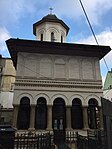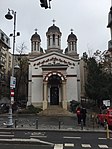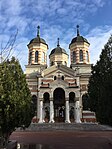Eforia Spitalelor Civile

Eforia Spitalelor Civile (English: Board of Civil Hospitals) was a non-profit organization which managed hospitals in Wallachia and Moldavia. Created by general Pavel Kiselyov in 1832, the organization survived until 1948, when it was abolished by the communist authorities. Initially, by General Kiselyov's decree of April 2, 1832, the board had the authority of managing the Colțea, Pantelimon, and Filantropia hospitals in Bucharest. In the course of time, it created and managed other hospitals, mainly in Wallachia, but also in Moldavia. The Board was reorganized on October 2, 1864, when new legislation required the board's budget to be submitted to parliament's approval and that the accounting be done according to government regulations and subject of the control of the Court of Accounts ("Curtea de conturi"). To finance the hospitals, the board had been endowed with land property, a significant part located in the territories of the former Turkish rayas. By 1921 it had a property of tens of thousands hectares of farm land and over 50,000 ha (120,000 acres) of forests. After the 1921 agrarian reform, the Board retained its right on the payments for oil extraction from its former properties. The board also owned several important buildings in Bucharest and several hotels in Sinaia.
Excerpt from the Wikipedia article Eforia Spitalelor Civile (License: CC BY-SA 3.0, Authors, Images).Eforia Spitalelor Civile
Bulevardul Regina Elisabeta, Bucharest Dealul Spirii
Geographical coordinates (GPS) Address Nearby Places Show on map
Geographical coordinates (GPS)
| Latitude | Longitude |
|---|---|
| N 44.434798732239 ° | E 26.097127708458 ° |
Address
KFC (Kentucky Fried Chicken)
Bulevardul Regina Elisabeta
050012 Bucharest, Dealul Spirii
Romania
Open on Google Maps











